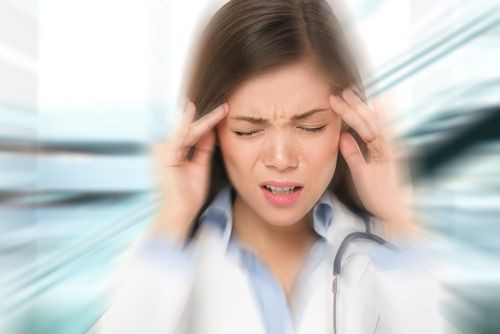Social Anxiety Disorder: Mythical Over-Diagnosed Mental Illness Or Real Malady Affecting Millions?

The American Psychiatric Association defines social anxiety disorder as significant anxiety and discomfort about being embarrassed or looked down on in social situations and then cites public speaking, meeting people, or using public restrooms as common examples. In short, the disorder amounts to a strong fear of being judged, a fear so powerful and overwhelming it undermines your ability to attend school or work, and perform everyday activities.
Hearing this definition, many people roll their eyes. Who doesn’t feel anxiety in social situations from time to time? Plus, anyone who has ever walked into a particularly hinky public bathroom would feel justified in their nervousness.
More than any other psychiatric label, it seems, social anxiety disorder seems to raise concerns about the current norm of quick-and-easy (and plentiful) diagnoses of mental illnesses.
So how exactly are mental illnesses diagnosed?
The DSM
The Diagnostic and Statistical Manual of Mental Disorders (commonly referred to as the DSM), is produced by the American Psychiatric Association as the standard guide used by mental health professionals to diagnose mental illness. The first edition of the DSM, published in 1952, listed 106 disorders and their descriptions in a concise 130 pages. Compare that to the DSM-5, published in 2013, which runs just under a thousand pages and lists more than 300 maladies. Importantly, the way a diagnosis enters the DSM is by a simple voting procedure.
As Gary Greenberg, author of The Book of Woe: The DSM and the Unmaking of Psychiatry, explains, disorders in the DSM are simply collections of symptoms agreed upon by psychiatrists and other experts assembled by the APA. As quoted in Psychology Today, the DSM-5 defines a mental disorder as "a syndrome characterized by clinically significant disturbance in an individual's cognition, emotion regulation, or behavior that reflects a dysfunction in the psychological, biological, or developmental processes underlying mental functioning. Mental disorders are usually associated with significant distress in social, occupational, or other important activities.”
“There's not a single diagnosis in DSM that lives up to the standards of medical diseases," Greenberg told USA Today. "If I as a therapist tell you (that) you have a mental disorder, it's not the same thing as my telling you you have diabetes or cancer because diabetes and cancer are diseases that can be confirmed through biochemical findings.”
Treatment for Anxiety
Returning to social anxiety, is there a biochemical test to decide whether someone has this disorder? No. A patient's response to mental health questions is the usual basis for a diagnosis. It seems impossible, then, to say social anxiety disorder absolutely exists and affects the large number of people — 15 million American adults — quoted by the National Institute of Mental Health. Of course, it still might be argued that just because, currently, no biochemical or physiological tests can prove the existence of this mental disorder, it does not follow that scientists will never find biological confirmation someday in the future.
The truth about mental illness in general and social anxiety disorder in particular probably can be found somewhere between the two extreme opinions, with one group believing no one ever has any form of mental illness since they can't be proven to exist and an opposing group arguing if a group of experts claim it’s a disorder then it must be so.
Still, those who follow a more moderate view of mental illness tend to believe the number of people suffering with these disorders is far less than currently diagnosed. After all, there have always been mentally troubled people who experience intense (if invisible) symptoms and encounter severe difficulties in their lives. Among their ranks, we might number those who are extraordinarily shy and sensitive — the old-fashioned, non-medical way of speaking about social anxiety disorder — people unable to navigate ordinary life in an ordinary way. When such a person appears in the health care setting, they are commonly treated with psychotherapy, though in many cases a doctor will also prescribe drugs, including anti-depressants (such as Paxil, Zoloft, Effexor), anti-anxiety medicines (potentially habit-forming benzodiazepines), and beta blockers, which reduce the symptoms of anxiety by lessening the heart rate, blood pressure, and shaking voice and hands.
Cognitive behavioral therapy (CBT), as described by the National Alliance on Mental Illness, may be the safest and most effective treatment for any number of anxiety disorders. CBT focuses on improving a person’s ability to cope in an upsetting situation by investigating the links and relationships between their thoughts, their feelings, and their behavior. With the help of a therapist, patients explore their thoughts and try to understand which lead to self-destructive actions and then they search for the underlying beliefs that spur these thoughts. Patients take their final step by changing their thinking to improve their coping.



























